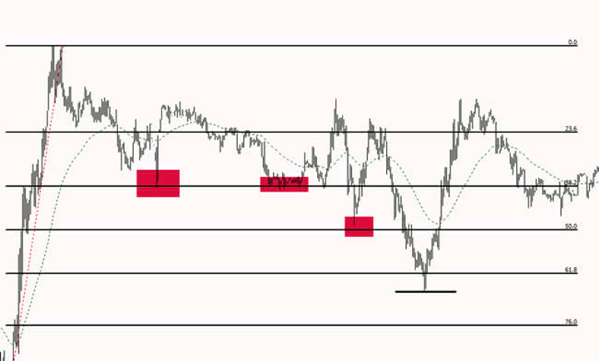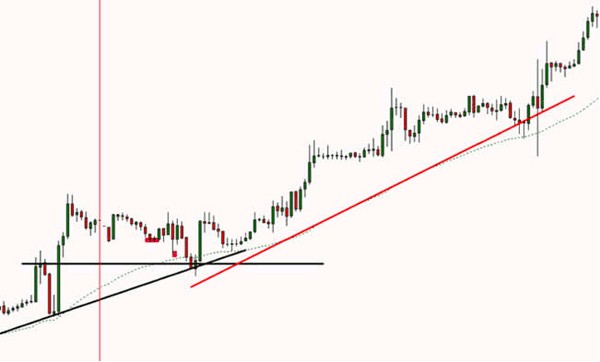An expert at NetPicks.com addresses a dangerous misconception about risk control within shorter charts.
Over the last few months, we have received many e-mails about our trading of the Dow futures. It is a scalping method designed to take eight points out of the market, with each trade pretty close to the market open. With experience and a good understanding of market mechanics, you can set the targets even further from entry.
The win rate is pretty high, and we do credit that to a stop-loss strategy that locks in profit very quickly as well as the concepts that are employed.
The problem is that many of the e-mails do not ask about the Dow futures directly. The question is about the Forex market and if it applies to that. I imagine it has much to do with the hype surrounding the currency markets, the low barrier to entry, and the higher equity needed to trade futures.
Every single time I get those e-mails, I shudder. Clearly influenced by the hype of Forex trading and darting into a trade, banking profits on position sizing aided by leverage and getting on with their day, they miss some truths about the FX market.
I am not one to bash daytrading, but when it comes to FX daytrading, I have to step back. Yes, that is how I started...however, that is certainly not where I have ended up.
These people talk about trading multiple lots, getting into trades, taking some losses, and ultimately having more winners than losers, as if that is the secret to success! It is not simple to find consistent profits in the markets. The number of blown accounts reported by brokers backs up that fact. One of the toughest markets to succeed on an intra-day basis is the highly hyped Forex market.
Let me ask you this: Have you ever entered a trade, been “spiked” out, then saw the price run in your intended direction? How about that happening several times as you attempt to reenter, “knowing” that you have picked a great zone to trade out of? It happens a lot.
How about watching spreads between currency pairs suddenly widen which increases your cost of trading? Many times. What about seeing a harmless news release send currency pairs whipsaw all over the chart?
The issue is these people will see this happen, have a terrible day, but then repeat the same process the next day. Soon, their account becomes nothing to trade and their dreams of riches—of making the Forex market a virtual “ATM”—is over.
I admit that some retail traders are OK with currency trading on an intraday basis. For myself, I credit a level head, a personal understanding of myself, and knowledge of the mechanics that make up what we call “markets.”
Still, I was miffed that I was paying so much to enter a trade. At the beginning of my trading, is was a few bucks. As my account grew, I started paying $10 to $18 per trade in spread costs! Compared to trading futures (and a real market), this was insane.
Swing trading FX has become my only exposure to the spot market. When I tell people that is what I do, they don’t think there are enough opportunities to make money, and that is why they are interested in scalping the FX market the same way I do the Dow futures.
Next: These people are not thinking correctly
|pagebreak|These people are not thinking correctly. The smaller time frame of the spot market is full of noise, full of accumulation and distribution stages (think congestion), and enough of a tease to make you go crazy. Yes, there are more opportunities to enter the market—and more opportunities to lose your money. The time frames I use for swing trades, 1-hour and above, are so much cleaner.
Here, is a five-minute chart of the GBP/USD. All the red squares are objective places to engage a long trade. Notice that all three get some traction, and all get stopped out. The final entry, where the black non fib line is, finally gives your trade some lift.
Compare that to the following chart. It is a one-hour chart of the same area, same pair. The entry is simply a confluence of a horizontal s/r line and a trend line. Risk is about 30 pips when you enter above the red candle at the junction of the two lines.
Many traders wrongly think they should drop to a much lower time frame to have a lower risk profile. What they really mean is a lower risk profile so they can jack up the position size.
As you can clearly see, the higher time frame chart has cleaner entries, and you can forget about noise being a deciding factor. You have fewer opportunities to enter, but the ones you get have much more weight behind them. In this case, there is one. This trade rallies up 270 pips to the peak with only a 30-pip risk.
See, while the smaller time frame will give you tighter entries, the stop outs will cost you not only in spread costs but psychological costs as well. In the end, having to wait for a prime opportunity saves you both, and banks some hefty profits as well.
Less is more when it comes to trading, especially currency in the spot market. Pick your spots, get rid of the noise, keep your eye on trade costs, and make each trade mean something.
This article dispels the whole “drill down to a tiny time frame to tighten your entry for less risk” crap that most traders are fed. Don’t believe it!
This article was written by the staff at NetPicks.com.























